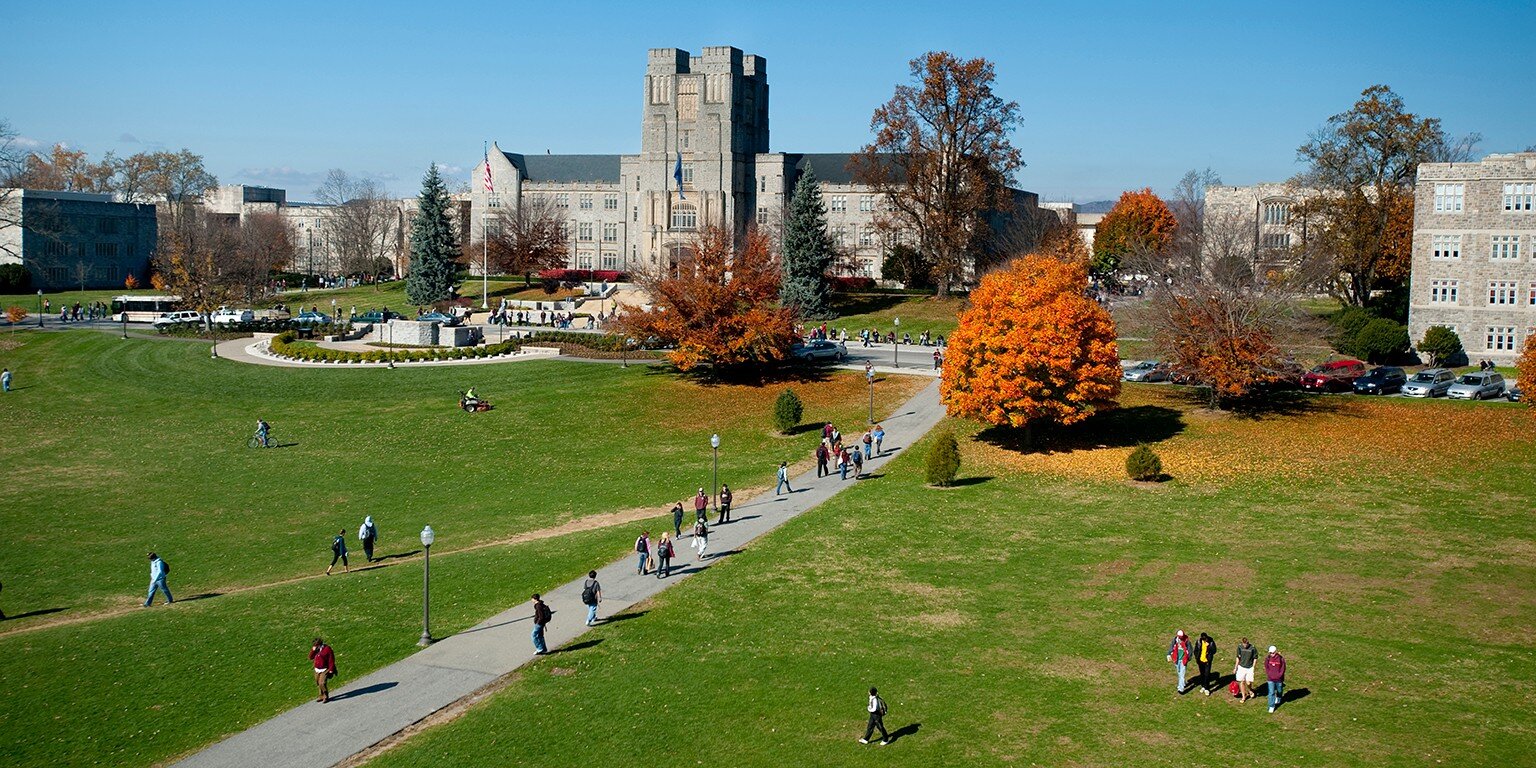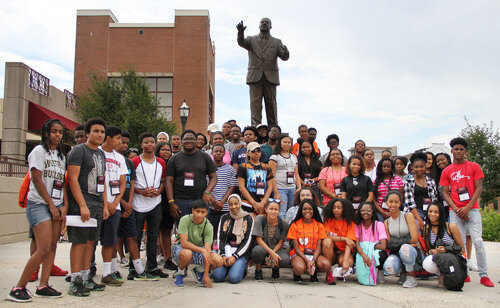EXHIBIT
CREATING HOME
BLACK INCLUSION AND COMMUNITY BUILDING
In this exhibit you can explore the different phases of Solitude’s history. We begin during the period when this place was indigenous land, and go on to explore its history as a slave plantation in the nineteenth century.
While at first the Virginia Tech administration actively sought routes to limit diversity and inclusion on campus, by the 1970s their goals had changed to the opposite. During the T. Marshall Hahn years (1962-1974), Black enrollment steadily increased from just a handful of Black students in 1962, to approximately 250 in 1973. Following in Hahn’s footsteps, Virginia Tech’s 12th President, William Lavery, continued his dedication to creating Virginia Tech that served the needs of all students and state residents. Under the leadership of Lavery, Virginia Tech established several programs and organizations dedicated to enhancing the recruitment, retention, academic achievement, and social well being of Black students.
President William Lavery with Marva Felder, Virginia Tech's first Black Homecoming Queen, 1983
An oral history with Dr. Calvin Jamison can be found here
The two men most responsible for these programs and groups were Calvin Jamison and Glenn Valentine, both Class of ‘77 alumni who went on to work in Virginia Tech’s admissions office immediately post-graduation. While an undergraduate, Jamison saw the need for Virginia Tech to increase its recruitment and outreach efforts for minority students, and proposed a program that would hold orientation weekends for Black high school students to the Student Budget Board. Although the Board rejected Jamison’s idea, his proposal made its way to the admissions office, and Jamison was hired alongside Valentine to start and spearhead VT’s minority recruitment program. The program launched in 1977 and saw great initial success. Valentine and Jamison traveled across Virginia and the east coast, visiting predominantly Black high schools and hosting numerous orientation weekends for them to visit, and get a better understanding of what student life at Virginia Tech entailed. According to Jamison, Black freshman enrollment increased from 60 in 1976, to 165 by 1978.
As more Black students began attending Virginia Tech, they began playing integral roles in the recruitment of future Black students. As Calvin Jamison explained, “The objective here was to create a critical mass of African American students who then would help us recruit additional students on campus, so that 165 who came in when we started the process they in turn had to help us recruit the next class. So they had to host students on campus when they attended, so we had created a climate where people were working diligently to recruit their colleagues and to help us create a critical mass.” Bringing this idea into fruition, several programs were launched in which Black students at Virginia Tech would host Black high school students interested in applying. Black Student Weekend, Gateways, and the Black College Institute are just a few of the many programs that utilized the power of students recruiting students.
Article from Fall 1986 Minority Newsletter describing the AIMS program Black College Institute participants, 2009
In addition to high school visits and orientation weekends, Jamison and Valentine also saw the need to introduce Black students to the prospect of college at a younger age. The team began meeting with school Superintendents to find ways to help middle school ages children get on the college track, and in 1986 the Alliance for Increasing Minority Success (AIMS) was launched in partnership with Fairfax County Public Schools. Thirty 7th grade students with high academic potential were selected to participate in the program, and were offered guaranteed admission to Virginia Tech on the condition that they maintain an adequate GPA and course load until their high school graduation. Message from Provost David Roselle encouraing Black students to take advantage of the various programs and services offered to them, such as the Peer Group program. Minority Newsletter, 1984
Both Jamison and Valentine realized that recruiting more Black students was not enough. In addition to recruiting more Black students, the University also began taking strides to offer them a stronger support system once they were enrolled. According to Jamison, his Class of 1977 began with 87 Black students, but only graduated with 27. In an effort to change such abysmal numbers, the University launched the Student Transition Program in 1983, a five-week summer program that offered admitted Black students the opportunity to live on campus, take college level courses, and become more acquainted with student life prior to their freshman year. In addition to increasing the academic success of participants, STP also gave Black freshmen a chance to meet other students and create a much needed support network, something that was absent for many Black students before the program was launched.
In 1978, Jamison and Valentine launched the Peer Group Leader Program “as an attempt to aid in the adjustment of Black freshmen to university life.” Much like their use of students in recruitment efforts, this program matched Black upperclassmen with a group of Black freshmen. In the spirit of Ut Prosim, peer group leaders helped students study, budget time, and helped freshmen find various resources and services across campus. By 1985, the program had over 50 peer group leaders, each working with a group of about 4 freshmen. Peer Group Leaders, 1982-83 Peer Group Leaders, 1982-83 Article about the challenges of being a Peer Group leader, Winter 1983 Minority Newsletter Advertisement in Spring 1982 Minority Newsletter calling for Peer Group Leader applications
The physical separation from campus and the student body was just one of the obstacles faced by the first African American students. However, despite these obstacles, these students were able to succeed in no small part because of the support they received from the African American community. Welcoming them into their lives and homes, the African American community was a vital piece in the integration of Virginia Tech. Black alumni number by class year. Minority Newsletter, Vol. 9, No. 1. Fall 1992
Virginia Tech enrollment by race, 1982-86. From 1987 Bugle
BLACK COMMUNITY ENGAGEMENT IN THE 1960S AND BEYOND BARRIERS OF ENTRY INTO WHITE CAMPUS CULTURE FORGING A STUDENT COMMUNITY A CONSTANT BATTLE BETWEEN INCLUSION AND EXCLUSION


























